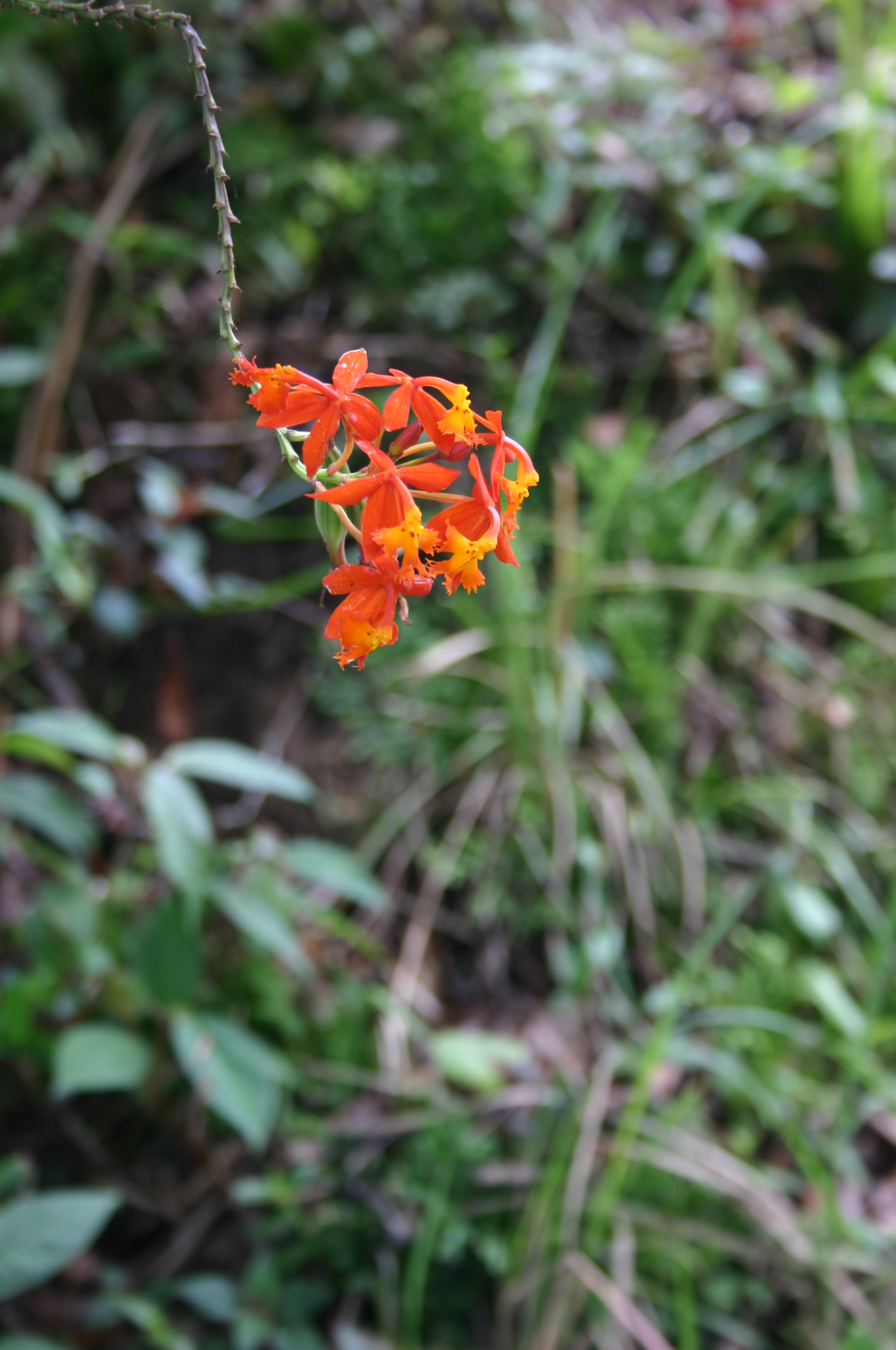|
Epidendrum Subsect. Racemosa
''Epidendrum'' subsect. ''Racemosa'' is a subsection belonging to section ''E''. sect. ''Planifolia'' of subgenus ''E''. subg. ''Epidendrum'' within the orchid family ''Orchidaceae''. Plants classified under Racemosa differ from other subsections of ''E''. sect. ''Planifolia'' in their production of raceme-like inflorescences. In 1861, Reichenbach identified 26 species within this subsection. These names correspond to 25 species currently recognized in the ''World Checklist of Selected Plant Families'', search for "Epidendrum" (page numbers refer to Reichenbach 1861): * '' E. acuminatum'' Ruiz & Pav.(1798) (p. 408) * '' E. angustissimum'' Lindl. (1853) (p. 407) * '' E. arbuscula'' Lindl. (1842) (p. 410) * '' E. cardioglossum'' Rchb.f. (1850) (p. 407) * '' E. cernuum'' Kunth (1816) (p. 409) * '' E. chioneum'' Lindl. (1845) (p. 409) * '' E. conopseum'' R.Br. (1813) (p. 408), syn. ''E. magnoliae'' Mu ... [...More Info...] [...Related Items...] OR: [Wikipedia] [Google] [Baidu] |
Epidendrum Sect
''Epidendrum'' , abbreviated Epi in the horticultural trade, is a large neotropical genus of the orchid family. With more than 1,500 species, some authors describe it as a mega-genus. The genus name (from Greek ''επί, epi'' and ''δένδρον, dendron'', "upon trees") refers to its epiphytic growth habit. When Carl Linnaeus named this genus in 1763, he included in this genus all the epiphytic orchids known to him. Although few of these orchids are still included in the genus ''Epidendrum'', some species of ''Epidendrum'' are nevertheless not epiphytic. Distribution and ecology They are native to the tropics and subtropical regions of the American continents, from North Carolina to Argentina. Their habitat can be epiphytic, terrestrial (such as '' E. fulgens''), or even lithophytic (growing on bare rock, such as '' E. calanthum'' and '' E. saxatile''). Many are grown in the Andes, at altitudes between 1,000 and 3,000 m. Their habitats include humid jungles, ... [...More Info...] [...Related Items...] OR: [Wikipedia] [Google] [Baidu] |
Epidendrum Quadrangulatum
''Epidendrum'' , abbreviated Epi in the horticultural trade, is a large neotropical genus of the orchid family. With more than 1,500 species, some authors describe it as a mega-genus. The genus name (from Greek ''επί, epi'' and ''δένδρον, dendron'', "upon trees") refers to its epiphytic growth habit. When Carl Linnaeus named this genus in 1763, he included in this genus all the epiphytic orchids known to him. Although few of these orchids are still included in the genus ''Epidendrum'', some species of ''Epidendrum'' are nevertheless not epiphytic. Distribution and ecology They are native to the tropics and subtropical regions of the American continents, from North Carolina to Argentina. Their habitat can be epiphytic, terrestrial (such as '' E. fulgens''), or even lithophytic (growing on bare rock, such as '' E. calanthum'' and '' E. saxatile''). Many are grown in the Andes, at altitudes between 1,000 and 3,000 m. Their habitats include humid jungles, ... [...More Info...] [...Related Items...] OR: [Wikipedia] [Google] [Baidu] |
Henri Guillaume Galeotti
Henri Guillaume Galeotti (10 September 1814 – 1858) was a French-Belgian botanist and geologist of Italian parentage born in Paris. He specialized in the study of the family Cactaceae. He studied geology and natural history at the ''Etablissement Géographique de Bruxelles'', where he graduated in 1835 with an award-winning dissertation on the geology of Brabant. After graduation, he spent the next five years in Mexico performing geological and botanical research. Here he collected numerous new species of plants, particularly cacti. In 1840 Galeotti was offered a position teaching botany at the University of Brussels, but turned down the offer, preferring to work at his nursery outside of Brussels, from where he imported Mexican flora for sell in Europe. During this time period, he collaborated with botanist Martin Martens (1797-1863) on scientific study of species native to Mexico. In 1853 he became director of the ''Jardin botanique de Bruxelles'' ( Botanical Garden of Bru ... [...More Info...] [...Related Items...] OR: [Wikipedia] [Google] [Baidu] |
Epidendrum Longipetalum
''Epidendrum'' , abbreviated Epi in the horticultural trade, is a large neotropical genus of the orchid family. With more than 1,500 species, some authors describe it as a mega-genus. The genus name (from Greek language, Greek ''επί, epi'' and ''δένδρον, dendron'', "upon trees") refers to its epiphyte, epiphytic growth habit. When Carl Linnaeus named this genus in 1763, he included in this genus all the epiphytic orchids known to him. Although few of these orchids are still included in the genus ''Epidendrum'', some species of ''Epidendrum'' are nevertheless not epiphytic. Distribution and ecology They are native to the tropics and subtropics, subtropical regions of the Americas, American continents, from North Carolina to Argentina. Their habitat can be epiphyte, epiphytic, terrestrial (such as ''Epidendrum fulgens, E. fulgens''), or even lithophytic (growing on bare rock, such as ''Epidendrum calanthum, E. calanthum'' and ''Epidendrum saxatile, E. saxa ... [...More Info...] [...Related Items...] OR: [Wikipedia] [Google] [Baidu] |

